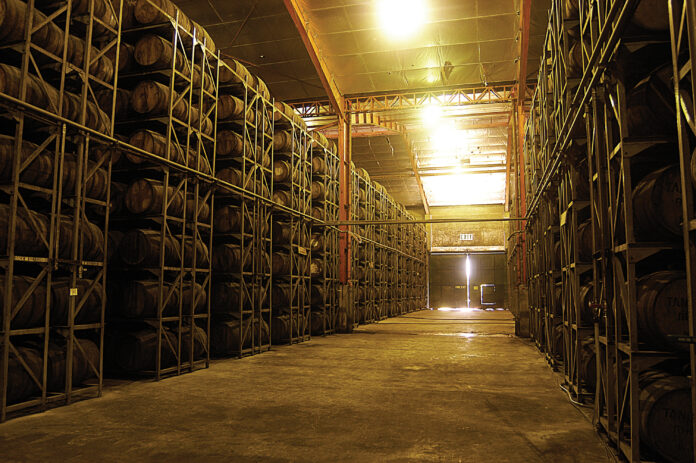At Tanduay’s aging warehouses across the Philippines, barrels of rum sit quietly under the tropical heat. The climate may seem harsh, but it plays a crucial role in shaping the character of a spirit that has won global acclaim.
For 171 years, Tanduay has relied on a barrel-aging process that merges science, tradition, and the unique environmental conditions of the Philippines to craft its rums. The company’s long-standing use of ex-bourbon American oak barrels, combined with the heat and humidity of the tropics, accelerates the chemical changes that transform raw alcohol into a smooth, complex drink.
“The high heat and humidity here speed up flavor extraction and evaporation. Lighter compounds that give a sharp burn evaporate faster, leaving behind a smoother mouthfeel,” said Janno Gironella Jr., head of research and development at Tanduay.

The barrel-aging process involves three types of chemical reactions: additive, productive, and reductive. Additive reactions extract flavors from the wood—such as vanilla and coconut. Productive reactions form new compounds like esters, which contribute fruity notes. Reductive reactions mellow harsh alcohol through evaporation and interaction with charred wood.
Tanduay uses Grade A molasses sourced from sugarcane and stores its rum in once-used bourbon barrels, which are rich in vanillin and lactone. While American oak is the standard, the company is also experimenting with barrels previously used for sauterne and sherry as part of its Tesoro Range of premium rums.
Aging duration is another critical factor. Gironella explained that during the first two years, the rum absorbs immediate flavors like vanilla and light wood. At 5–7 years, it develops deeper notes of toffee and dried fruit. Rums aged a decade or more evolve into what he called “robust, sophisticated profiles.”
Managing this process at scale comes with logistical challenges, including consistency across locations. To address this, Tanduay has implemented a centralized tracking system for every barrel and assigned dedicated teams to sample and test batches against an archive of reference profiles. If a batch diverges from the desired taste, it is either blended or aged further.
Tanduay also emphasizes sustainability. Used barrels are recycled into garden planters, furniture, or fuel. Some barrels are reused for Ginto, Tanduay’s gin aged in rum-soaked barrels, which gives the product a distinct flavor profile.
Demand for aged rums is growing as more consumers embrace rum as a sipping spirit. Tanduay is increasing its inventory of aged expressions to expand its premium offerings and building a new warehouse in El Salvador, Mindanao. Trials using alternative casks are underway, and small-batch limited-edition rums are in development.
“Consistency starts with a solid foundation in tradition,” Gironella said. “We have detailed profiles for every rum in our portfolio—based on decades of tasting notes, barrel records, and data. Our blenders and trained sensory specialists are the gatekeepers, sampling batches regularly to ensure nothing drifts.”









